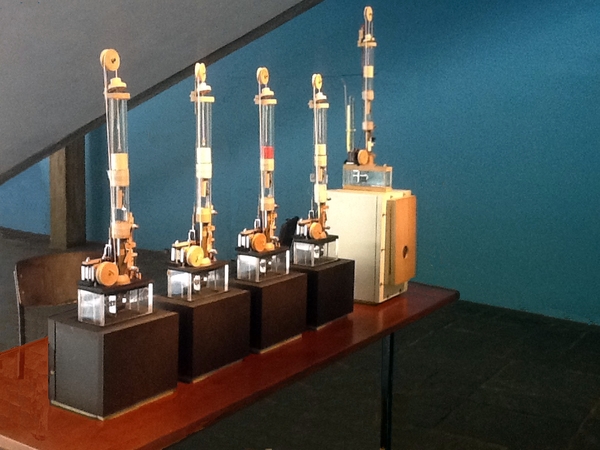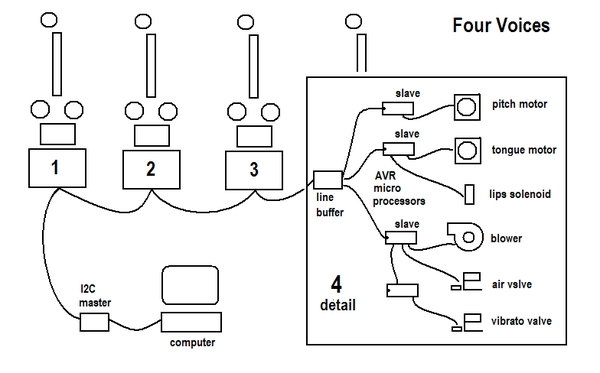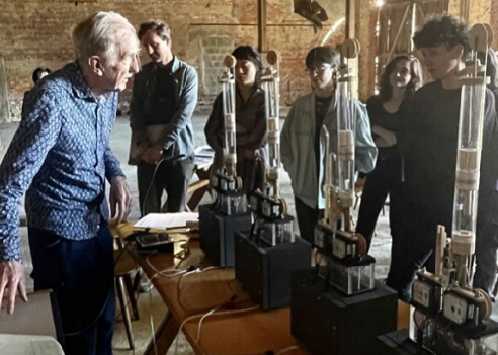Following the success of the
Singing Machine I started on four similar machines. The voices have smaller blowers than the Singing Machine and at present there are no air pressure regulators - the pressure is regulated by adjustable leaks.
The music data is stored in a computer. It sends the pitch and vowel instructions, via an I2C network, to 12 microprocessors, 3 for each Voice. that control their motors, blowers and valves. The Voices can be spread out along a 25 meter cable - maybe longer, I haven't tried.
Masahiro Miwa wrote a score and we had a week-long email exchange with my
recordings and his corrections. I demonstrated them for three days at KONTAKTE 2017 at the Akademie der Künste where they turned out to be extremely popular.
 KONTAKTE: Biennial for Electro-acoustic Music and Sound Art, 2017
KONTAKTE: Biennial for Electro-acoustic Music and Sound Art, 2017
Academy of Arts, Berlin, in collaboration with Singuhr, Berlin
On the right is their prototype, the Singing Machine.
"Martin Riches brought his magical sound machines - sculptural works that produce human speech. This was definitely one of the highlights of the week."





